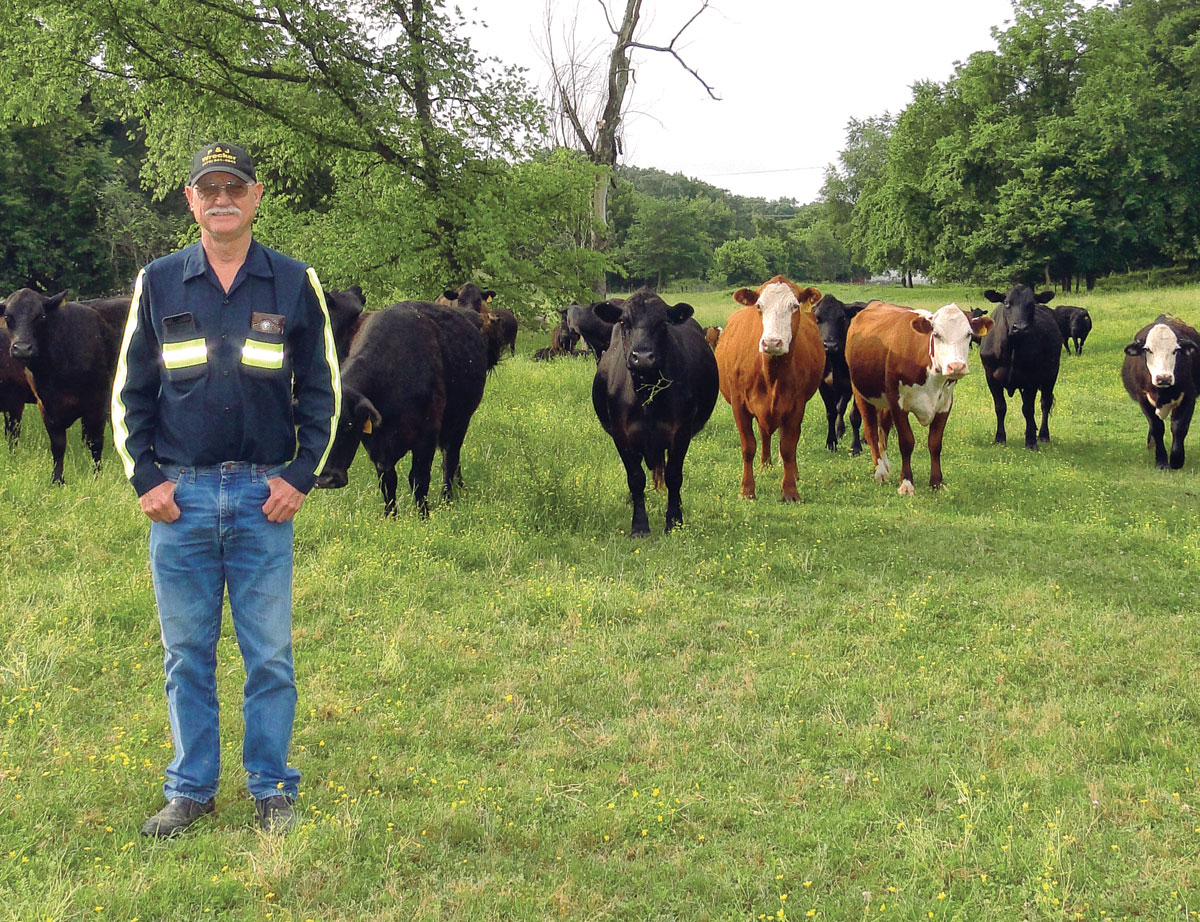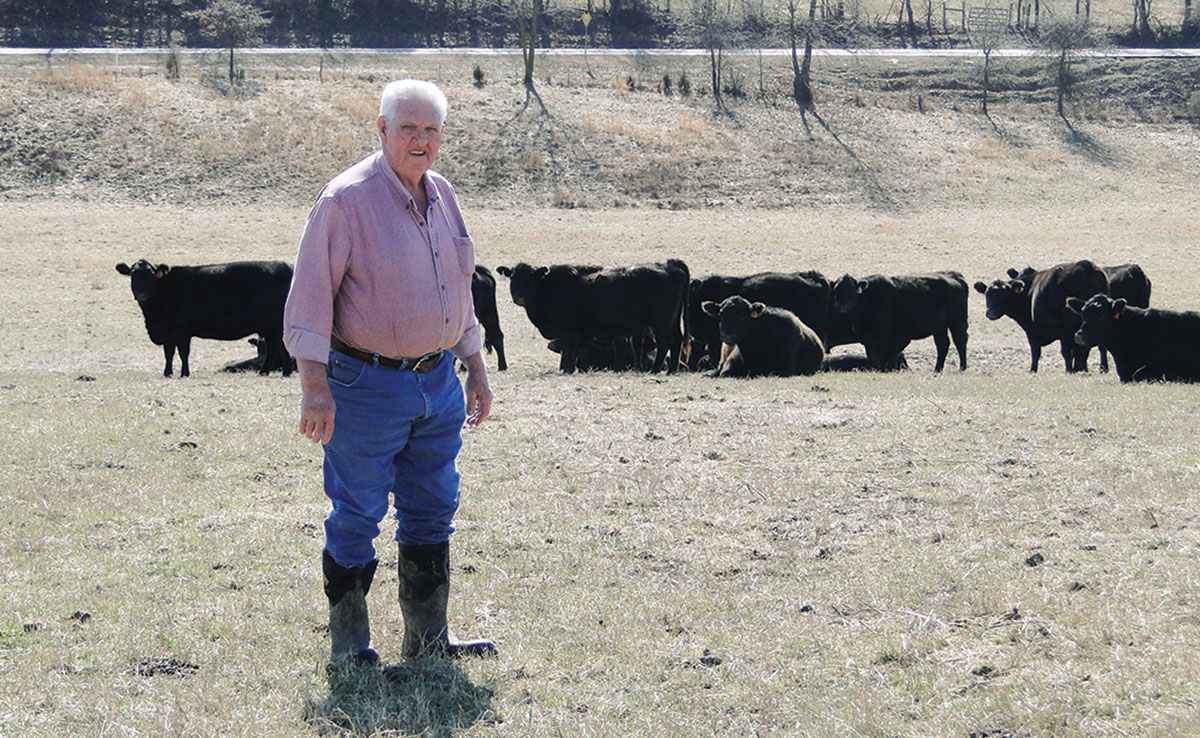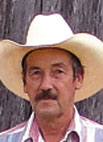
James Larson appreciates the size, structure and carcass quality of Limousin cattle
Though James Larson was raised as a town kid by his mom Fern after his father died when James was only 6, his life took an important turn when he was 17 years old.
The instrument of change was a cattle trader named Burl Griggs who introduced the youth to agriculture.”
A friend in high school introduced James to bareback riding, resulting in James being on the University of Arkansas rodeo team for a year. Later, a man named Don Hewitt from Paris, Ark., introduced James to Limousin cattle and was the president of the Limousin Association before James was president. James later was on board of directors of Ozark Cattlemens’, and state Area 1 vice-president and the second vice-president for Arkansas Cattlemen’s Association.
James married Pat, whose father was a farmer and the third or fourth employee of Tyson in 1953. Now at 94, Pat’s father Eillis is still going strong and has plenty of Tyson stories to tell.
Fifteen years ago, James started P&J Wreckers in Tontitown, Ark. The business evolved from James building 18 wheelers out of wrecks and reselling them. However, when the price of bringing the wrecks in became too expensive, James bought a wrecker of his own and people began asking for help which he still does from time to time.
“Now I’m looking to slow down a bit, so my herd is down to 45 from 60,” James said. “I have 45 mommas, as well as a polled Limousin and one polled Hereford bull, plus some calves already on the ground.”
James picks his bulls using EPDs and seeks gentle temperament and low birthweight, with good milk from both the Hereford and the Limousin lines. James doesn’t like temperamental cattle and once bought a high-dollar bull in partnership with three others. During the second season, the partner in Illinois had a problem with that bull, who tried to get at sweet feed in the back of a truck and had to be chased out with a pitchfork. Unfortunately, the partner forgot to tell James, and that season the bull chased James twice and caused injury that compounded a very serious earlier injury. He took two years to heal and no one thought he would ever walk again.
“I’m one of the few people who can say he had a fight with a bull and a truck and survived to tell the story. The second time that bull and I faced off he pulled part of his hide off while charging my truck. Smart people get rid of high-headed animals and turn them into hamburger. You have to be careful and be smart,” James explained.
James started with Limousins because of Don and has always appreciated their size, structure, meat quality and marbling. Then the black Angus Association had a superior marketing plan and all black became the most profitable. Five years ago, James added Angus and two years ago the Hereford because black baldies have maintained a premium price.
“Customers can see the cross and know that the animals have hybrid vigor which means they will grow out well,” James said.
Because the purpose of being in the cattle business is to make money, James’ breeding and weaning goal is to produce calves that wean at 5 months and weigh approximately 550 pounds, which is about half of the momma’s weight. He then sells when he feels the market is right. He prefers spring calving. He is often hunting during the winter and wants to be around during calving season rather than putting the burden totally on his wife. He also doesn’t like the impact of cold weather on baby calves and inevitable sickness, regardless of constant surveillance.
James spends $1,000 each year to have a veterinarian work his cattle, partially to meet new certification requirements without question. The veterinarian is also up-to-date on market trends and new advances so that the expense is well worth the cost in James’ opinion. Occasionally, if James notices a worm problem, he will supplement with a Safeguard worming block in addition to free choice trace mineral blocks.
The Larson farm uses a 14-percent protein ration, which James uses to feed his bulls from September until June 1, though cows and calves are grained only as needed according to weather conditions. All animals graze and are provided with Johnsongrass hay, which James raises, plus additional hay he exchanges for half of his neighbor’s hay in return for chicken litter.
The farm is also home to four 40-by-400 George’s chicken houses, which are used to raise six flocks a year with 23,000 chickens per house, raising birds to 3.8 pounds. The houses are cleaned out annually, but are tilled and decaked during the 20 days between flocks.
“I have a lot of fun with city slickers because they believe me when I say I have to walk the chickens one time every day on a leash and that it takes a long time for 23,000 chickens.” James said.
As James looks back on his life, on his mother for his determination he said those early years really stuck. Pat and James did it on their own without any help from anyone just the good lord above.






